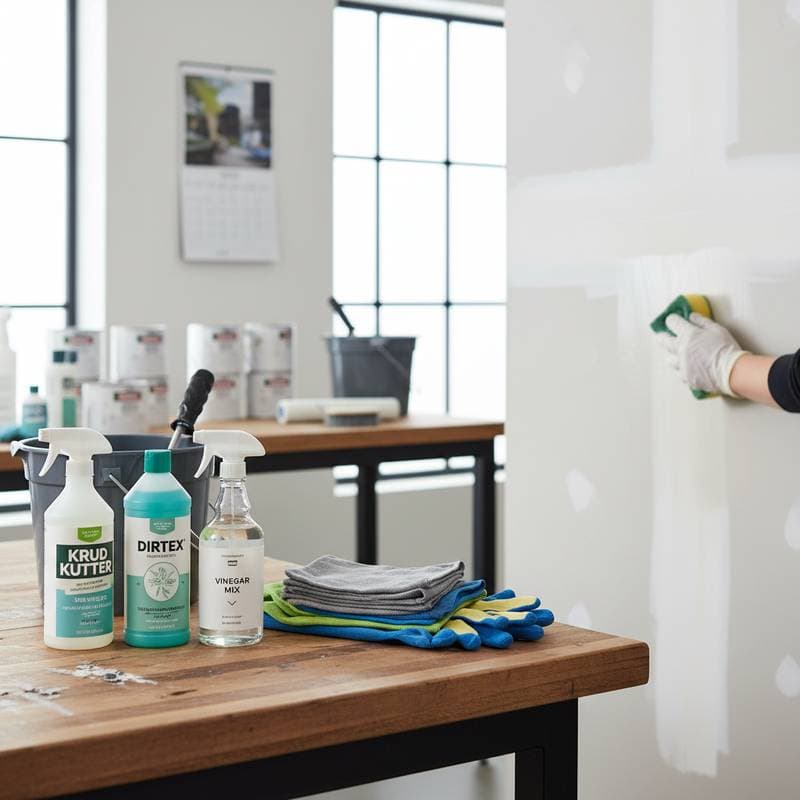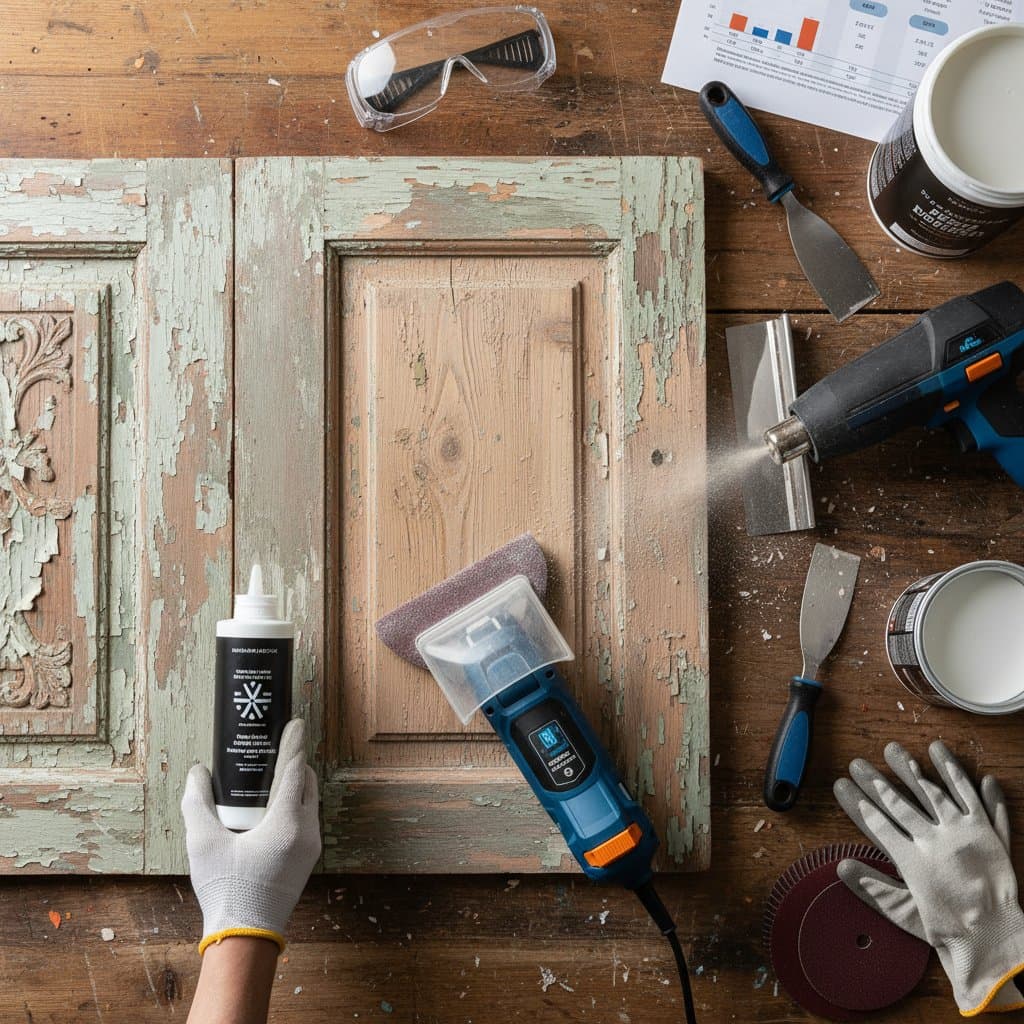Safer TSP Alternatives for Effective Surface Preparation in 2025
Surface preparation remains a critical step in any painting project. Trisodium phosphate, commonly known as TSP, has long served as a powerful degreaser that removes grease, dulls glossy surfaces, and prepares areas for primer application. However, TSP poses risks to skin, nearby plants, and certain modern materials if not rinsed thoroughly. Fortunately, effective alternatives exist that provide comparable results while prioritizing safety, environmental impact, and ease of use.
Reasons to Choose Alternatives to TSP
TSP gained popularity for its potency, yet it often proves incompatible with contemporary paint formulations, laminate surfaces, and environmentally conscious households. In professional settings, such as television productions and residential projects, safer cleaners have demonstrated superior performance by eliminating residue and maintaining surface integrity for optimal paint adhesion. These options avoid issues like chalky films or uneven sheens that can compromise the final finish.
Ideal cleaners effectively dissolve grime, oils, and contaminants while rinsing cleanly to safeguard users and ecosystems. Recent advancements in formulation have introduced phosphate-free and eco-friendly products that meet these criteria without sacrificing efficacy.
Effective TSP Alternatives for Various Needs
Several reliable options now dominate surface preparation, each suited to specific project scales and budgets. Select based on the surface type and contamination level to ensure professional outcomes.
1. Phosphate-Free Ready-Mixed Cleaners
These products offer straightforward replacements for TSP, providing robust degreasing without phosphates. Options such as Krud Kutter Prepaint Cleaner or Simple Green All-Purpose Cleaner work well on painted walls, metal, and laminates, rinsing away with plain water.
For budget-conscious users, combine a few drops of dish soap with warm water and a small amount of white vinegar to address light grease. Mid-range choices include gallon-sized commercial cleaners priced between ten and fifteen dollars. Higher-end professional concentrates allow dilution for versatility across materials.
To verify readiness, test by observing water distribution on the surface; even sheeting indicates proper preparation, while beading suggests additional rinsing.
2. Baking Soda and Vinegar Solution
This time-tested combination leverages baking soda's mild abrasiveness and vinegar's ability to dissolve residues and mineral deposits. Apply it particularly to kitchen walls and trim affected by cooking oils.
Prepare the solution by mixing one part vinegar with three parts water in a spray bottle. Dampen a sponge with water, sprinkle baking soda on it, scrub gently, then spray and wipe the area. Follow with a rinse using a clean, damp cloth and allow full drying.
This method introduces no toxic residues, making it suitable for households with children or pets.
3. Borax-Based Solutions
Borax, a natural mineral cleaner, softens water, degrades grease, and offers mild disinfection. It provides sufficient strength for exterior siding or garage walls while remaining gentler than TSP.
Dissolve one tablespoon of borax in a quart of warm water and apply via sponge or sprayer. Rinse thoroughly afterward. This approach excels in exterior applications, balancing thorough cleaning with surface preservation.
4. Commercial Eco-Friendly Degreasers
For projects involving substantial buildup, plant-based eco degreasers utilize surfactants to lift contaminants without aggressive chemicals. Seek products labeled as biodegradable, phosphate-free, or low in volatile organic compounds.
These cleaners perform exceptionally on cabinetry and trim, where residues might hinder paint bonding. Concentrated forms enable customization of strength, promoting cost efficiency over multiple uses.
Essential Tools for Efficient Preparation
Effective cleaning extends beyond the solution to the tools employed. The following items enhance precision and results:
- Microfiber cloths, which remove residues without redistribution.
- Soft scrub pads designed to avoid scratching glossy surfaces.
- Separate rinse buckets, one for the cleaning solution and one for fresh water.
- Sponge mops for uniform application over large areas.
Assess completion by touching the dried surface; a subtle squeak signals readiness for paint, whereas slipperiness indicates incomplete preparation.
Practical Tips for Renters and Budget Users
Even with limited resources, achieve professional-level preparation through simple techniques. Magic eraser cubes effectively eliminate scuffs and marks without additional chemicals. Dilute two drops of dish soap in a quart of water for mild, everyday cleaning. A vinegar-based spray proves ideal for baseboards and trim during touch-up work.
These methods ensure touch-up paint integrates seamlessly, extending the fresh appearance of walls.
Situations Where TSP Remains Appropriate
In select scenarios, TSP retains value for its intensity. Use it on heavily greased garage walls, smoke-damaged areas, or unpainted masonry. Employ gloves, rinse meticulously, and shield plants or fabrics from exposure. Reserve TSP for demanding tasks rather than routine applications.
Insights from Professional Applications
Experience from on-site installations, including television sets and client residences, underscores the importance of thorough preparation. Hidden oils may evade visual detection but become evident under paint and lighting. Implement these strategies for reliability:
- Test the cleaner on an inconspicuous area first.
- Employ bright task lighting to identify overlooked spots.
- Allow complete drying before priming to prevent adhesion failures.
- Keep clean towels available to address drips promptly.
Such practices minimize errors and support efficient workflows, even under time constraints.
Maintaining Long-Term Surface Quality
Proper initial preparation simplifies ongoing care. Well-bonded paint resists dust accumulation and wears uniformly, requiring only occasional wipes with mild cleaners. Selecting safer alternatives fosters not only environmental responsibility but also enhanced durability, health benefits, and confidence in every project outcome.



